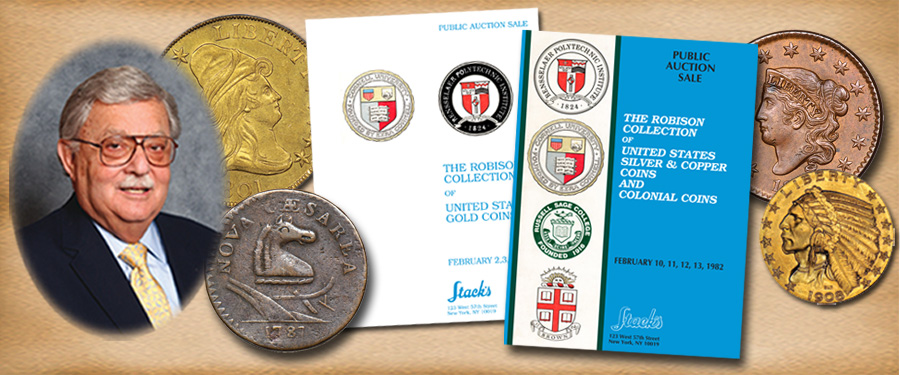
In the earlier parts of this story, I have been discussing how the combination of numismatics and philanthropy satisfied the collecting desires and charitable nature of Ellis Robison. He assembled landmark collections that were notable for two reasons: first for the scope of each collection and auction, and second for how the funds were used to benefit institutions of higher learning.
Ellis Robison (Roby to his many friends) was a warm and dedicated person. He and his wife, Doris, felt an active body helped build an active and very useful life. For this reason they contributed to athletic programs and facilities at a variety of colleges and universities, as mentioned in earlier parts of the story. In addition, they established herb gardens at various institutions to help create medications for the benefit of all. All of the recipient schools put letters into the fore part of the 1982 catalog to express their appreciation for all that had been done by Ellis Robison for their schools.
I spoke earlier about his outstanding U.S. gold coins sold in 1979 and also of the colonial and copper coins that were sold in 1982. The same 1982 auction contained the balance of his collection, including all the minor coins of the U.S and his extensive collection of silver coins.
The minor coins were a small but important portion of the collection. Starting with small cents, it also contained a full collection of two-cent pieces, three-cent nickel and silver, and five-cent pieces, virtually all in Mint State and Proof.
The silver coins were so extensive in quantity, quality and rarity that they could have been a sale by themselves. “Roby” always gave credit to the many collections he had the opportunity to select from, those formed beginning in the early 1900s through after World War II. These included the early James A. Stack, Col. Flanagan, H.R. Lee, Davis Graves, Col E.H.R. Green, Anderson Dupont, J.F. Bell and many more — providing him with a selection rarely seen in decades since.
The half dimes were almost complete, including 1792 half disme, 1794, 1795, 1796/5, 1796, 3 varieties of 1797, the rare 1802,1838 "O", 1855, 1856, 1857 Proofs, 1859 Transitional, and 1860 Transitional, with most in either Proof or Mint State.
The dimes, missing but a few, commenced with the 1792 disme in copper, 1796, 1797, l798, 1800, including varieties, through 1837, mostly Mint State. Early Liberty Seated dimes were mostly Mint State, and included 1856, 1857 Proofs, and 1859 Transitional Proof. The balance of Liberty Seated, Barber and Mercury dimes (no 1894-S) were in primarily Mint State or Proof.
In my next article, I will continue with the quarters and the rest of the important silver coins in the Robison Collection.





